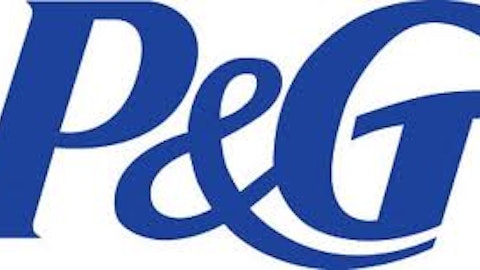
Since every industry operates slightly differently, some of the metrics used to understand each industry are somewhat different as well, and unless investors know what to look for, it’s easy to miss a big red flag when reading through an earnings report.
So today let’s take a look at The Home Depot, Inc. (NYSE:HD) and a few key metrics to watch on May 21, when the company reports earnings.
First and foremost, we want to look at and compare current revenue and earnings per share with the prior year’s same-quarter performance, as well as what analysts were expecting. For this coming quarter, analysts expect The Home Depot, Inc. (NYSE:HD) to show revenue of $18.67 billion and earnings per share of $0.76. During the first quarter of 2012, Home Depot posted revenue of $17.8 billion and EPS of $0.68.
Next, since The Home Depot, Inc. (NYSE:HD) is a retailer at heart, we want to look for a few retail specific metrics such as average ticket cost, average sales per square foot, number of transactions, and comparable store sales increases.
For full-year 2012, The Home Depot, Inc. (NYSE:HD) posted an average ticket price of $54.89, higher than 2011’s $53.28. Compared to Lowe’s, Home Depot has some work to do here. In 2012, Lowe’s posted an ATP of $62.82, after hitting $62.00 in 2011.
Home Depot’s 2012 average sales per square foot hit $318.63, which was a strong increase of 6.6% over 2011. The company also saw a 3.5% increase in the number of transactions in 2012, while comparable-store sales rose 4.6%. On the whole, these are very strong results for a retailer of Home Depot’s size.
Finally, we want to see whether The Home Depot, Inc. (NYSE:HD) is giving any indication of opening new stores in the future, or whether it opened any during the current quarter. Store-count increases would cause revenue and the number of transactions to jump on a yearly or even quarterly basis and distort a few metrics, so it’s important to take this into account when comparing against past results, and of course it’s also key when attempting to determine future growth prospects. For retailers, if new stores aren’t being opened or even planned, growth will begin to flatten out, and shares could fall if growth had been built into the price.
Home Depot carries a price-to-earnings ratio of 24.45, which, when compared with Wal-Mart Stores, Inc. (NYSE:WMT)‘s 15.75 and Target Corporation (NYSE:TGT)’s 15.6, is rather high. While all three of these companies are giants in retail and are planning on opening new locations, Home Depot’s stock has been pushed higher because investors believe the recovery of the housing market will help boost sales, which is understandable when we look at the company’s past performance when we had a strong housing market.
For full-year 2006, The Home Depot, Inc. (NYSE:HD) had 2,100 stores worldwide but still managed to bring in $79 billion in annual sales. At the end of the company’s fiscal 2012, the company had 2,256 stores worldwide, yet it only produced revenue of $74.8 billion. That revenue began falling in 2007 with the start of the financial and housing crisis, though it still managed to come in at $77.3 billion for that year, with 2,196 stores.
Based on those statistics, it’s easy to see why many investors believe Home Depot will grow revenue and, more importantly, earnings in the coming years, which also explains why the stock has risen so dramatically both last year and thus far in 2013. While the Dow Jones Industrial Average (Dow Jones Indices:.DJI) gained 7.25% in 2012 and has risen 11.64% in 2013, shares of Home Depot rose by 46.7% last year and are already up 18.59% year to date. But while Home Depot’s stock performance has largely been attributed to the housing recovery, investors want to remain focused on earnings and how the company’s metrics compare with past quarters. If the company’s fundamentals begin to deteriorate, regardless of whether the housing market recovers, the stock is likely to experience poor performance.
The article A Few Things to Look For in Home Depot’s Upcoming Earnings Report originally appeared on Fool.com and is written by Matt Thalman.
Fool contributor Matt Thalman has no position in any stocks mentioned. The Motley Fool recommends Home Depot and Lowe’s.
Copyright © 1995 – 2013 The Motley Fool, LLC. All rights reserved. The Motley Fool has a disclosure policy.


